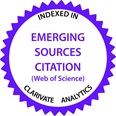Tytuł
Czy subiektywnie postrzegane autentyczne przywództwo pełni funkcję mediatora w zależności między inteligencją emocjonalną pracowników a ich samowspółczuciem?
Keywords
perceived authentic leadership, employees’ emotional intelligence, self-compassion, tea industry employees
Słowa kluczowe
subiektywnie postrzegane autentyczne przywództwo,inteligencja emocjonalna pracowników,samowspÛłczucie,pracownicy branży herbaciarskiej
Abstract
Purpose: The main purpose of this study is to evaluate whether perceived authentic leadership has a mediating role in the relationship between employees’ emotional intelligence levels and their self-compassion perceptions. Design/methodology/approach: All data in the research were obtained from 175 employees in 12 different tea factories. In the study, in which the descriptive and cross-sectional method was followed, the analysis of the data was made with Hayes’ (2013) simple mediation analysis approach within the scope of structural equation modeling. Findings: The results of the analysis show that authentic leadership perceptions of employees are positively related to their emotional intelligence levels and self-compassion perceptions, and that perceived authentic leadership plays a mediating role in this relationship. Research limitations/implications: The research has some limitations. First, the findings obtained in the course of the analyses are not generalized to the whole population, as they are collected from a specific sample. It should be mentioned that the results were obtained from different institutions. It can be said that the perceived authentic leadership approach plays a role in the relationship between individual-oriented positive attitudes such as emotional intelligence and self-compassion. Therefore, it is anticipated that the results obtained from the study contribute to the literature. In addition, handling the statistical aspect of the research only with the mediation analysis approach constitutes a separate limitation. Different statistical approaches can be adopted for future studies. Originality/value: This study presents a fragment of the results of structural equation modeling conducted for tea industry employees in Turkey on the topic of authentic leadership.
Abstrakt
Cel: głównym celem badania jest ocena czy subiektywnie postrzegane autentyczne przywództwo pełni funkcję mediatora w zależności między poziomem inteligencji emocjonalnej pracowników a ich percepcją samowspółczucia. Metodologia: wszystkie dane wykorzystane w badaniu pochodzą od 175 pracowników z 12 różnych fabryk herbaty. W badaniu, którego podstawę stanowiła metoda opisowa i przekrojowa, analizę danych przeprowadzono z zastosowaniem prostej analizy mediacji Hayesa (2013) w ramach modelowania równań strukturalnych. Wyniki: wyniki analizy wskazują, że postrzegane przez pracowników autentyczne przywództwo wykazuje pozytywny związek z poziomem inteligencji emocjonalnej i percepcją samowspółczucia pracowników, a przywództwo to jest w tej zależności mediatorem. Ograniczenia/implikacje badawcze: badanie ma pewne ograniczenia. Po pierwsze, wyniki analiz nie są uogólnione na całą populację, ponieważ ich podstawą jest specyficzna próba. Należy wspomnieć, że bazują one na danych pozyskanych z różnych instytucji. Można stwierdzić, że podejście oparte na subiektywnie postrzeganym autentycznym przywództwie odgrywa pewną rolę w zależności między indywidualnymi pozytywnymi postawami, takimi jak inteligencja emocjonalna i samowspółczucie. Z tego względu przewiduje się, iż wyniki badania wniosą wkład w literaturę przedmiotu. Ponadto ograniczeniem jest koncentracja na aspekcie statystycznym badania wyłącznie przy zastosowaniu analizy mediacji. W przyszłych badaniach można przyjąć inne metody statystyczne. Oryginalność/wartość: w artykule zaprezentowano fragment wyników modelowania równań strukturalnych przeprowadzonego wśród pracowników branży herbaciarskiej w Turcji w zakresie autentycznego przywództwa.
Acknowledgments
Funding
The editing of this article was financed under Agreement No. RCN/SP/0316/2021/1 with funds from the Ministry of Science and Higher Education allocated to the ‘Rozwój czasopism naukowych’ programme.
Recommended Citation
Yalap, O., & Gençay, E. (2023). Does the Perceived Authentic Leadership Have a Mediating Role in the Relationship Between Employees’ Emotional Intelligence and Self-Compassion?. European Management Studies, 21(1), 48-67. https://doi.org/10.7172/1644-9584.99.3
First Page
48
Last Page
67
Page Count
19
DOI
10.7172/1644-9584.99.3
Publisher
University of Warsaw







